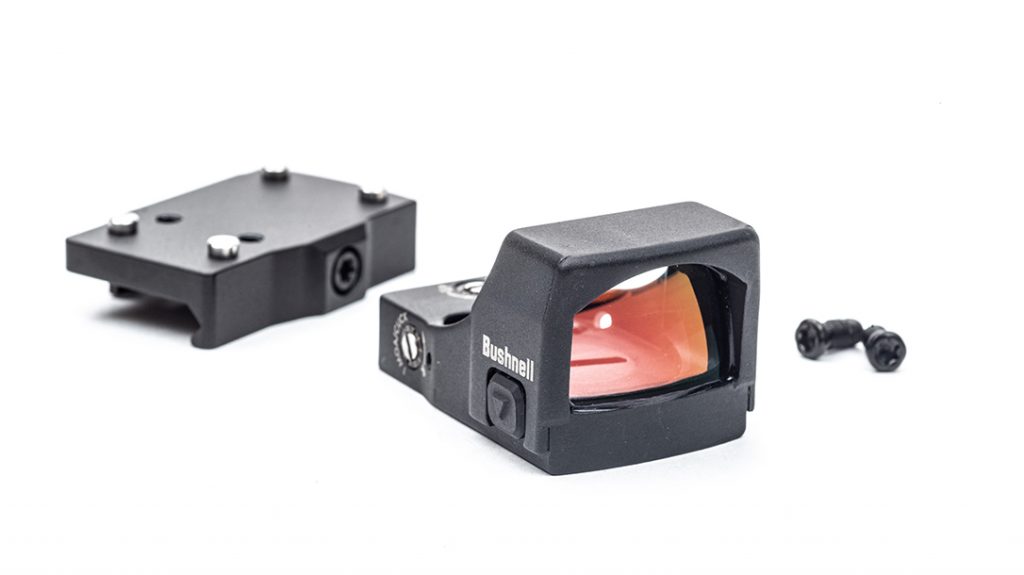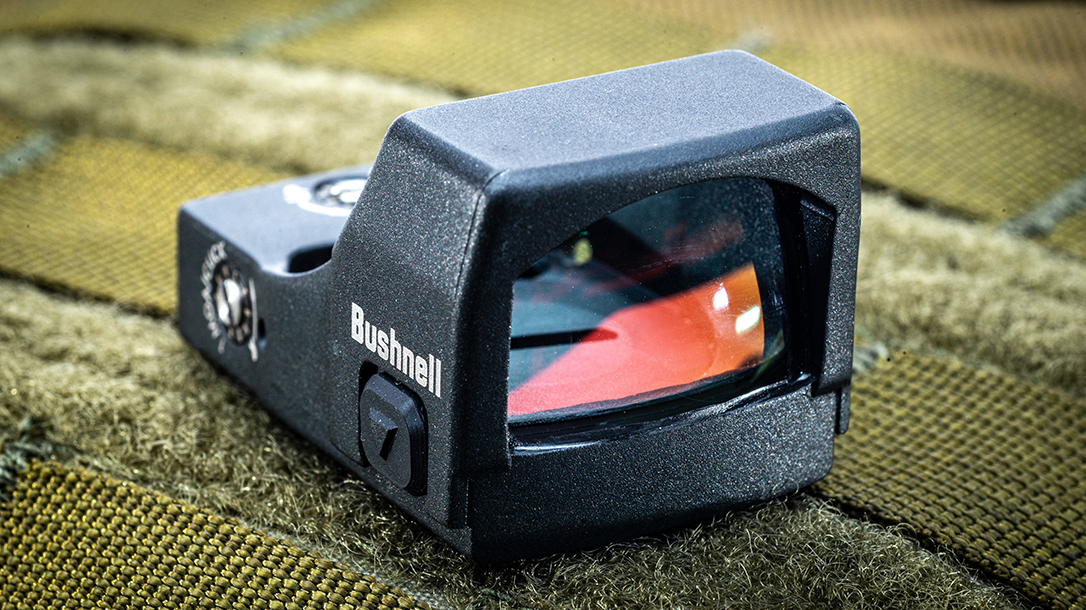Gunsite is one of my most favorite places on Earth. There hasn’t been a single time I’ve been there that I haven’t left with more friends than I arrived with. It’s also a place I return home from with some valuable knowledge I didn’t have before I arrived. The first week of September 2020 was no different when I got my first look at the Bushnell RXS-250.
Bushnell RXS-250 Reflex Sight
The RXS-250 is a reflex sight designed for the rigors of police duty use, but can also be used for concealed carry and various competition shooting sports.
Bushnell’s new RXS-250 has some weighty credentials. For instance, it provides more than 50,000 hours of run time from a single CR2032 battery; that’s more than five years, folks. It also has a user-select 12-hour timeout and the battery is top-loading. There’s no need to remove the sight and possibly affect the zero just to replace the battery. For maximum compatibility, Bushnell designed it to fit the popular DeltaPoint footprint.
Advertisement — Continue Reading Below
Bushnell’s RXS-250 has a convenient layout and intuitive design. It has detent windage and elevation adjustments and each distinct click is equal to a one MOA change (approximately one inch at one-hundred yards). The sight also features 10 brightness settings; they are easily adjustable by the shooter with a rubberized button for increasing the brightness of the dot on the left side of the sight housing and decreasing on the right. The RXS-250 is compatible with night vision on its lowest brightness setting.
RXS-250 Testing
Bushnell personnel issued brand-new Glock 17 Gen 5 pistols with an RXS-250 mounted on top of the slide, just in front of the rear sight. The red dots were coarsely sighted in and each of the writers was given the opportunity to fine tune their zero from the bench. We were also issued Blackhawk T-Series L2C retention holsters. With a rigid body made from dual-injected, glass reinforced nylon and a soft-touch inner layer that is both super slick and sound dampening, the holsters provided a very stable platform for presentations and are devastatingly fast. Without providing too much detail, the shooter’s thumb disengages the retention lock on the holster using a natural drawing motion.

Advertisement — Continue Reading Below
Erick Gelhaus, a career law enforcement officer who actually wrote the curriculum on Gunsite’s Red Dot Optic class, was our chief instructor. He was able to impart some of his vast experience during our three-day class. Bushnell-sponsored professional shooters Jessie Harrison and KC Eusebio not only treated us to some first-class shooting demonstrations, but also provided us with helpful competition tips. Professional and courteous, these two pros were able to take a relatively complex shooting exercises and break them down to simple, easy-to-learn movements.
I’ve used red dot sights for years. I’ve outfitted each of my home defense guns with them. However, I haven’t spent significant time with a red dot-equipped handgun. This would change during my time at Gunsite. One element crucial to successfully learning a new system is volume of repetition. No one complained that we didn’t fire enough rounds. My rough estimate round count was 700 rounds in three days of shooting. We had generous range time and what appeared to be an unending supply of Federal 147-grain HST ammunition. All of us were up to speed in a relatively short time.
Getting on Target
With the searing Arizona sun beating down on us, we performed drill after drill until all three of our 17-round magazines ran dry. One hundred-degree heat and a cloudless sky wore us all down. But a brief respite to the shade of the range shed to replenish our magazines and gulp down some water was enough to re-energize us. By the end of three days I was able to easily find the dot on presentation and make quick decisive hits at distances that would have been challenging for iron sights.
Advertisement — Continue Reading Below
One huge advantage of red dot optics is that the shooter can concentrate on the target and shoot with both eyes open. For law enforcement applications, peripheral vision can be life-saving, so too can the ability to place a shot with speed and precision. The RXS-250 will allow you to do this without ever taking your focus off of the target.
The new Bushnell RXS-250 was impressive. Throughout our three-day class, none of the optics had any issues or problems. The sight’s 4 MOA red dot is sharp and distinct. The lens also has absolutely no distortion; not even the blue hue so common to other red dot optics. Priced at an extremely affordable $249.99, the RXS-250 also carried a transferable five-year warranty. I think you’d be hard pressed to find a better optic at a more affordable price. For more information, visit bushnell.com.
Bushnell RXS250 Specs
- Reticle: 4 MOA
- Brightness: 10 Settings
- Overall Length: 1.8 inches
- Width: 1.25 inches
- Overall Weight: 1.5 ounces
- Battery Life: 50,000 hours (5 years)
- Battery Type: CR2032
- MSRP: $249.99
























